1. Nyquist frequency does not consider measurement accuracy
Nyquist frequency is the limit at which the frequency gets folded, so that you cannot distinguish signals at 0.4x samplerate from signals at 0.6x samplerate.
The measurement accuracy of amplitude and phase suffers long before that. For practical oscilloscope use, you would aim for 10x samplerate compared to signal frequency.
2. Repetitive signals can be sampled multiple times
Oscilloscope analog bandwidth can be higher than Nyquist frequency for repetitive signals. This is called equivalent-time sampling. The oscilloscope will interleave samples from multiple repetitions of the signal to achieve higher effective samplerate, while the analog system must be able to pass the frequency in question.
3. The 54621A is an entry-level model
The sister model 54622A boasts 100 MHz bandwidth at 200 MSa/s samplerate:

But later in the manual you'll find a note that "single shot BW = sample rate/4 or bandwidth of scope, whichever is less", i.e. 50 MHz. The higher analog bandwidth is there for equivalent time sampling.
4. Oversampling provides graceful degradation of signal quality
In modern entry-level scopes, it is typical to have 1 GSps sampling with 100 MHz -3 dB analog bandwidth, and no equivalent time sampling functions. These scopes can usually display even 200 MHz signals with little distortion other than decreased amplitude.
Compared to this, the 54621A requires more care from its operator. The manual does warn that aliasing and distortion can occur as signals get near or exceed the Nyquist limit at the active samplerate. The analog bandwidth limit is not there to avoid aliasing, it is just the best bandwidth that the analog circuit in this scope is capable of.
